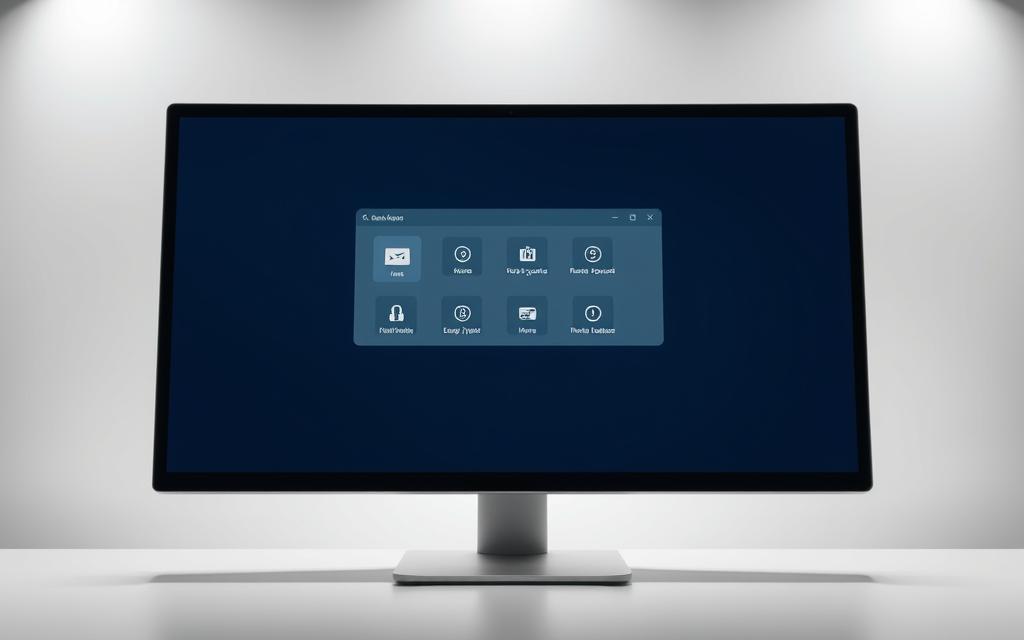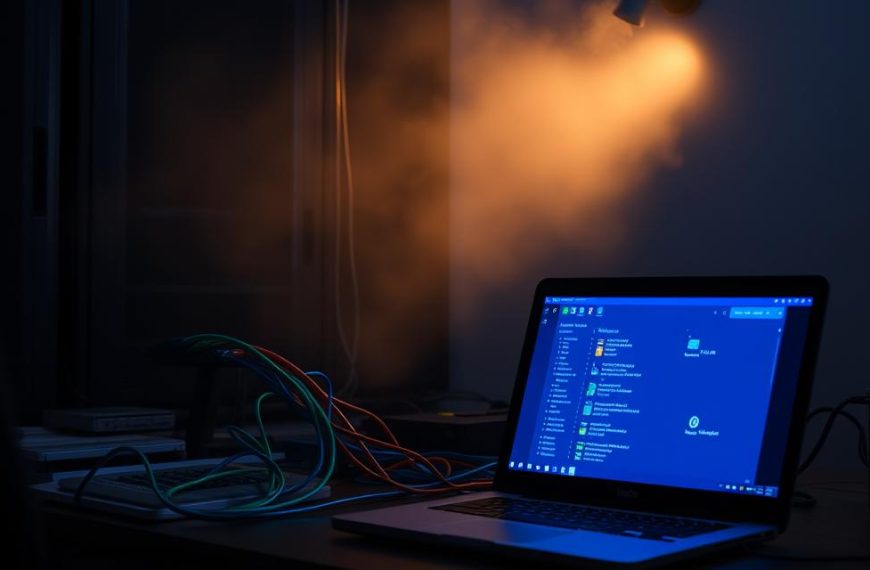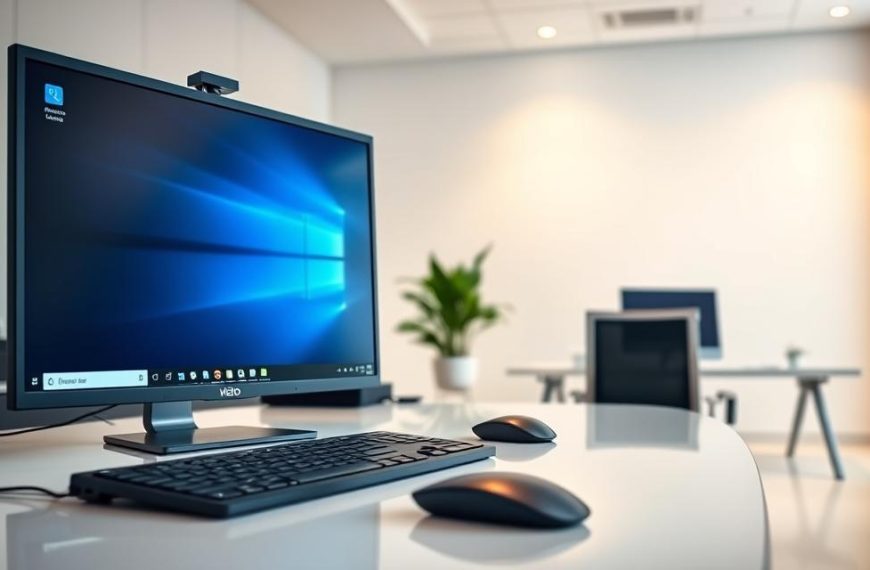In today’s interconnected world, managing multiple computer screens has become increasingly prevalent. Whether you’re overseeing a team of remote workers or managing a network of computers, being able to access multiple screens remotely can greatly enhance productivity.
Utilising remote desktop tools allows users to seamlessly access and manage multiple desktops from a single location. This capability is particularly useful for IT professionals and organisations with extensive computer networks.
By employing the right software solutions, such as Windows Remote Desktop or third-party applications like TeamViewer, users can efficiently monitor and control multiple screens. Ensuring the security of your network is paramount when using these tools.
Understanding Remote Screen Viewing
With the rise of remote work, the need to view other computer screens on the same network has become increasingly important. Remote screen viewing is a technology that enables users to access and control another computer’s screen over a network, facilitating collaboration, support, and management.
What is Remote Screen Viewing?
Remote screen viewing allows users to see the screen of another computer in real-time, enabling more dynamic and hands-on access. This technology is particularly useful for remote access and support, allowing technicians to directly observe and resolve issues without being physically present.
Benefits of Viewing Other Computer Screens
The benefits of remote screen viewing are numerous. For virtual teams and remote workers, it enables more effective collaboration and support. Some of the key benefits include:
- Enhanced IT support capabilities, reducing downtime and travel costs.
- Improved team collaboration, facilitating better communication and decision-making.
- More flexible work arrangements, allowing employees to access their work computers from anywhere.
- Effective training and monitoring of employees across distributed teams.
As noted by a remote access expert, “Remote screen viewing has revolutionised the way we work, enabling us to collaborate more effectively and resolve issues promptly.” For more information on remote access, visit https://tsplus.net/how-to-remote-access-other-computers-on-my-network/.
| Benefits | Description |
|---|---|
| Enhanced IT Support | Reducing downtime and travel costs by allowing technicians to directly observe and resolve issues. |
| Improved Collaboration | Facilitating better communication and decision-making among team members. |
| Flexible Work Arrangements | Allowing employees to access their work computers from anywhere, maintaining productivity. |
Prerequisites for Viewing Other Computer Screens
Viewing other computer screens on the same network requires some essential prerequisites to be in place. Ensuring these conditions are met is crucial for a seamless remote viewing experience.
Network Requirements
A stable and secure network connection is vital. All devices must be connected to the same network to facilitate remote screen viewing.
Permission and Access Considerations
Proper permissions and access controls must be established. This ensures that only authorised users can view remote screens, maintaining privacy and security.
Compatible Devices and Operating Systems
The compatibility of devices and systems is also crucial. For instance, Windows operating systems offer built-in Remote Desktop functionality. The table below summarises the compatibility of various operating systems with remote screen viewing:
| Operating System | Remote Viewing Capability | Additional Software Required |
|---|---|---|
| Windows | Built-in Remote Desktop | No |
| macOS | Screen Sharing feature | Optional third-party apps |
| Linux | VNC or specific remote desktop apps | Yes |
Using Chrome Remote Desktop
Chrome Remote Desktop allows users to remotely view and control other computer screens on the same network. This service is particularly useful for IT support, remote work, and collaborative projects.
Setting Up Chrome Remote Desktop
To start using Chrome Remote Desktop, users need to download the Chrome Remote Desktop app from the Chrome Web Store. After installation, they can set up remote access by following the prompts to enable remote connections.
Connecting to Another Computer
Once set up, users can connect to another computer by launching the Chrome Remote Desktop app and selecting the computer they wish to access. They can then control the remote computer using a virtual trackpad or touch input modes if the remote device runs on Windows.
Managing Multiple Screen Sessions
Chrome Remote Desktop supports multiple monitor configurations, allowing users to switch between displays or view them simultaneously. The display selector in the toolbar enables navigation between different screens. Users can also customise input settings for each session and securely end sessions using the disconnect option.
- Chrome Remote Desktop supports viewing multiple monitors on the remote computer.
- Use the display selector to navigate between different screens.
- Session management features allow connections to multiple computers.
- Customise input settings for each session.
- End sessions securely using the disconnect option.
How to View Other Computer Screens on the Same Network Using TeamViewer
For those needing to monitor multiple screens, TeamViewer provides an effective solution. TeamViewer is a versatile tool that enables users to view and control multiple computer screens on the same network.
Installing and Configuring TeamViewer
To start, download and install TeamViewer from the official website. Configuration involves setting up the remote access feature, which allows you to connect to other computers on the same network.
Establishing a Remote Connection
Once installed, launch TeamViewer and enter the ID and password of the computer you wish to connect to. This establishes a secure remote connection, enabling you to view the remote computer’s screen.
Viewing Multiple Screens Simultaneously
TeamViewer supports multi-monitor setups, allowing you to view all screens of the remote computer either individually or simultaneously. You can access the multi-monitor selector from the TeamViewer toolbar, which displays thumbnails of all available monitors on the remote computer.
- Choose between viewing a single monitor at a time or viewing all monitors simultaneously in a consolidated view.
- Adjust the layout and scaling options to optimise the display based on your local screen size and resolution.
- For advanced multi-screen management, use TeamViewer’s window arrangement features.
Using Windows Remote Desktop Connection
Remote Desktop Connection is a valuable tool for IT professionals and individuals who need to access another computer remotely. It enables users to view and control another computer’s desktop as if they were sitting in front of it.
Enabling Remote Desktop on the Target Computer
To use Remote Desktop Connection, you first need to enable it on the target computer. This involves going to System Settings, selecting “Remote Desktop,” and toggling the switch to enable it.
Connecting from Your Computer
Once Remote Desktop is enabled on the target computer, you can connect to it from your computer by opening Remote Desktop Connection, entering the target computer’s name or IP address, and clicking “Connect.”
Multi-Monitor Support and Configuration
Windows Remote Desktop Connection supports multiple monitors, enhancing productivity. To enable this, go to the “Display” tab in Remote Desktop Connection settings and check the box labeled “Use all my monitors for the remote session.” You can also configure resolution settings based on your monitor configuration.
- Windows Remote Desktop Connection supports spanning your remote session across multiple local monitors.
- To enable multi-monitor support, navigate to the “Display” tab and check “Use all my monitors for the remote session.”
- Configure resolution settings to match your local monitors or specify custom dimensions.
AnyViewer: A Comprehensive Solution
AnyViewer is a robust remote access software that enables users to monitor and control multiple computer screens within a unified interface. This capability is particularly useful for organisations that need to oversee activities across various departments or functions.
Setting Up AnyViewer
Setting up AnyViewer is straightforward. Users can quickly install and configure the software to start monitoring remote computers. The intuitive interface simplifies the process, making it accessible even for those with limited technical expertise.
Creating and Managing Screen Walls
AnyViewer’s Screen Wall feature allows users to monitor multiple computers simultaneously in a single, consolidated view. Each remote screen is displayed as a tile within the interface, providing real-time updates across all monitored screens.
Advanced Features for Multiple Screen Monitoring
The software offers advanced filtering and grouping options, enabling users to organise large numbers of computers into manageable categories. Additionally, the alert system notifies users of specific events or conditions on monitored computers, such as user logins or system errors.
By utilising AnyViewer’s remote access features and management capabilities, organisations can enhance their monitoring and control over multiple computer screens. This leads to improved productivity and streamlined operations.
Security Considerations When Viewing Remote Screens
Remote screen viewing, while convenient, introduces several security risks that must be mitigated. Ensuring the security of remote desktop connections is vital to protect sensitive information and prevent unauthorized access.
Protecting Your Network During Remote Sessions
To safeguard your network, it’s essential to configure your antivirus software to allow necessary traffic for remote desktop tools. Additionally, if the computer being accessed is on a work or school network, it may have restrictions on giving others access. In such cases, contacting your administrator for more information is advisable.
Best Practices for Secure Remote Access
Implementing strong password policies, enabling multi-factor authentication, and establishing session timeout policies are crucial for secure remote access. Maintaining detailed logs of remote access activities and developing clear remote access policies also play a significant role in enhancing security.
- Use complex passwords that are regularly changed and not reused across different services.
- Enable multi-factor authentication to add an extra layer of security.
- Automatically disconnect inactive sessions after a predetermined period.
- Maintain detailed logs of all remote access activities for security audits.
- Develop clear policies defining who can use remote viewing tools and under what circumstances.
Conclusion
As we’ve explored the various methods for viewing other computer screens on the same network, it’s clear that the right tool can make all the difference. We’ve examined several solutions, including built-in Windows tools and third-party software like Chrome Remote Desktop, TeamViewer, and AnyViewer, each offering distinct advantages and limitations.
When selecting a remote access solution, considerations such as ease of use, security features, and multi-monitor support are crucial. Security remains a paramount concern, requiring thoughtful configuration of authentication methods and network protection measures.
The ability to view and manage multiple computer screens simultaneously has become increasingly valuable in modern work environments, supporting remote collaboration and IT support. As remote work continues to evolve, these technologies will likely advance further, offering even more seamless and secure ways to connect and collaborate.














